As of 30 October 2017, facilities operating vehicles that transport goods (including certain dangerous goods) and passengers are required to ensure compliance with the adopted Sanitary Rules (the Rules).
The Rules set out requirements for the maintenance and operation of transport vehicles (including road, rail, air and water vehicles) used for transporting passengers, food, food raw materials, water, radioactive and hazardous chemical and toxic substances.
Personnel involved in the transportation of goods and passengers must undergo regular medical examinations.
Employers must provide workplaces of the personnel involved in transporting goods and passengers with a first aid kit.
Paragraph 4 of the Rules sets out general requirements and procedures related to dangerous goods transportation.
All organisations that handle dangerous goods must develop a safety instruction that prescribes the sequence of actions involving handling of dangerous goods, safety measures and appoints persons responsible for organizing works with dangerous goods.
It is prohibited to load together dangerous goods belonging to different categories or dangerous goods together with non-dangerous goods. It is also prohibited to load and unload unmarked and unlabelled dangerous goods.
Containers used for transporting dangerous goods must be marked with appropriate hazard signs and be easy to clean.
Paragraph 7 of the Rules sets out specific sanitary requirements applicable to the transportation of dangerous goods by road vehicles. The employer must inform the driver and other personnel involved in dangerous goods transportation about the dangerous goods in question. Sender must indicate in transportation documents (bill of lading and a written instruction for the driver) all hazards associated with the goods in question and all precaution measures that must be taken.
Law: Order No. 359 of 31 May 2017 on the Sanitary Rules “Sanitary and Epidemiological Requirements for the Means of Transport Transporting Passengers and Goods”





